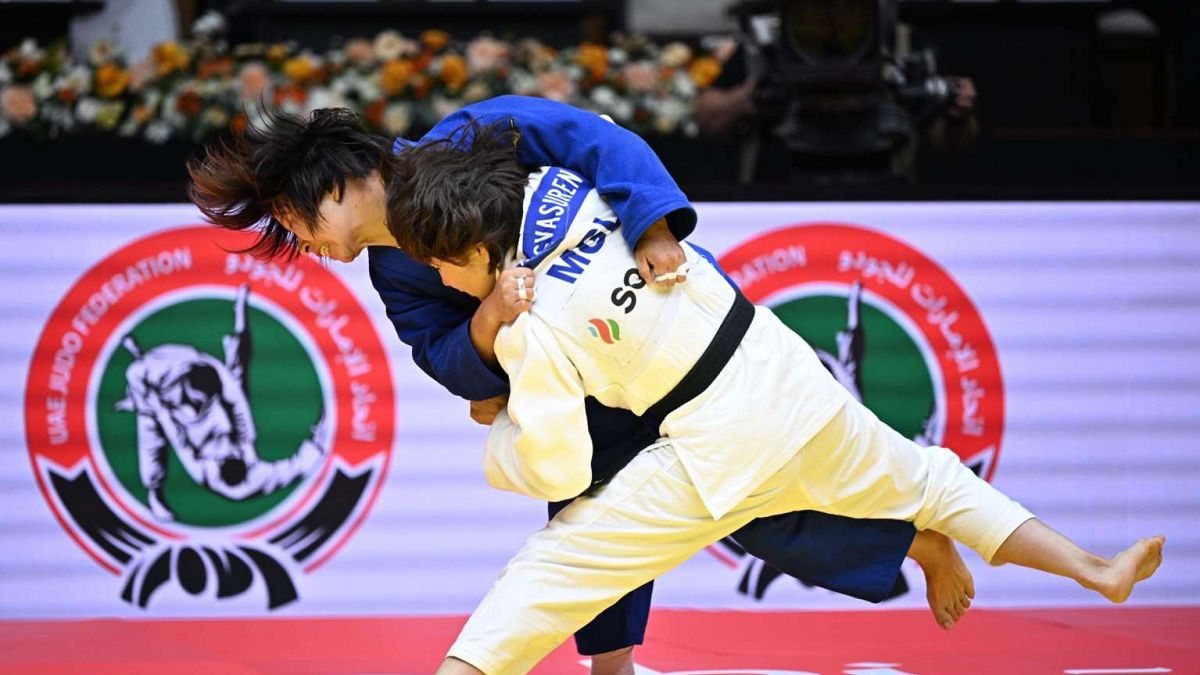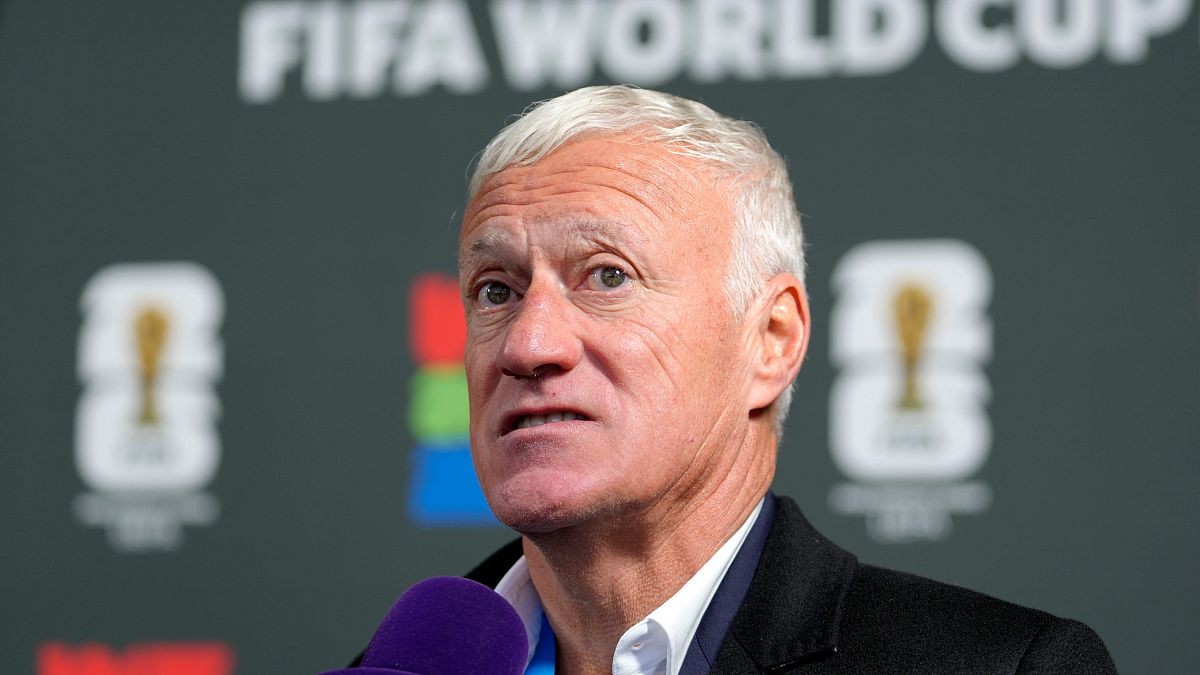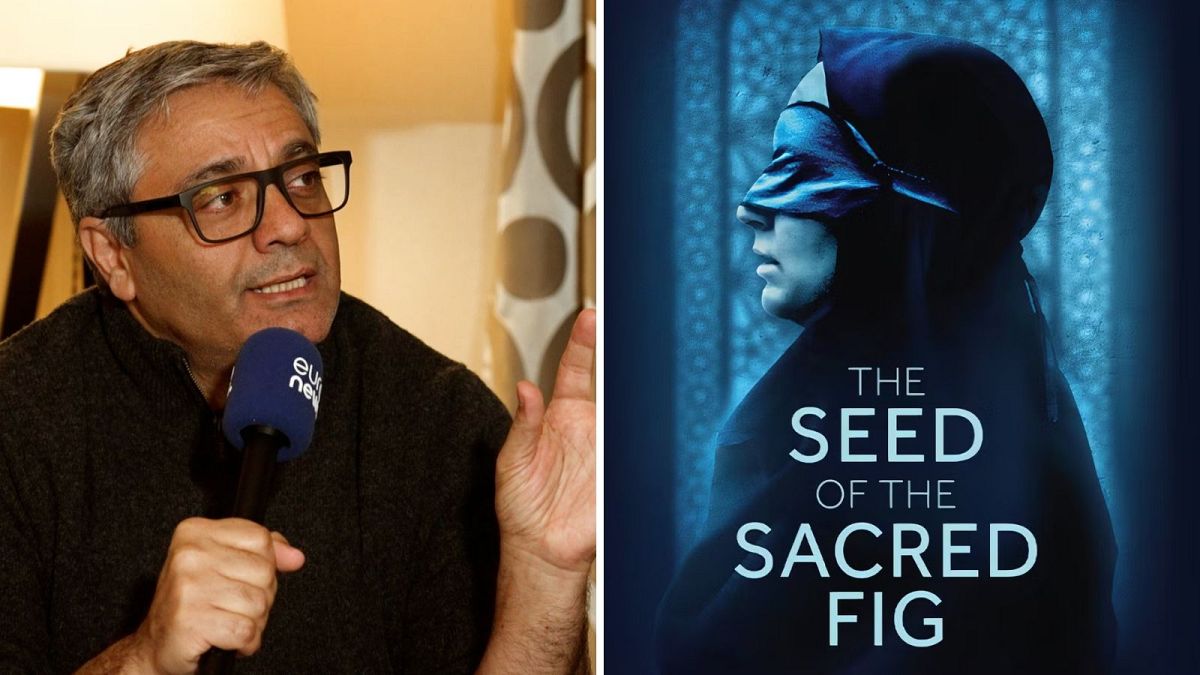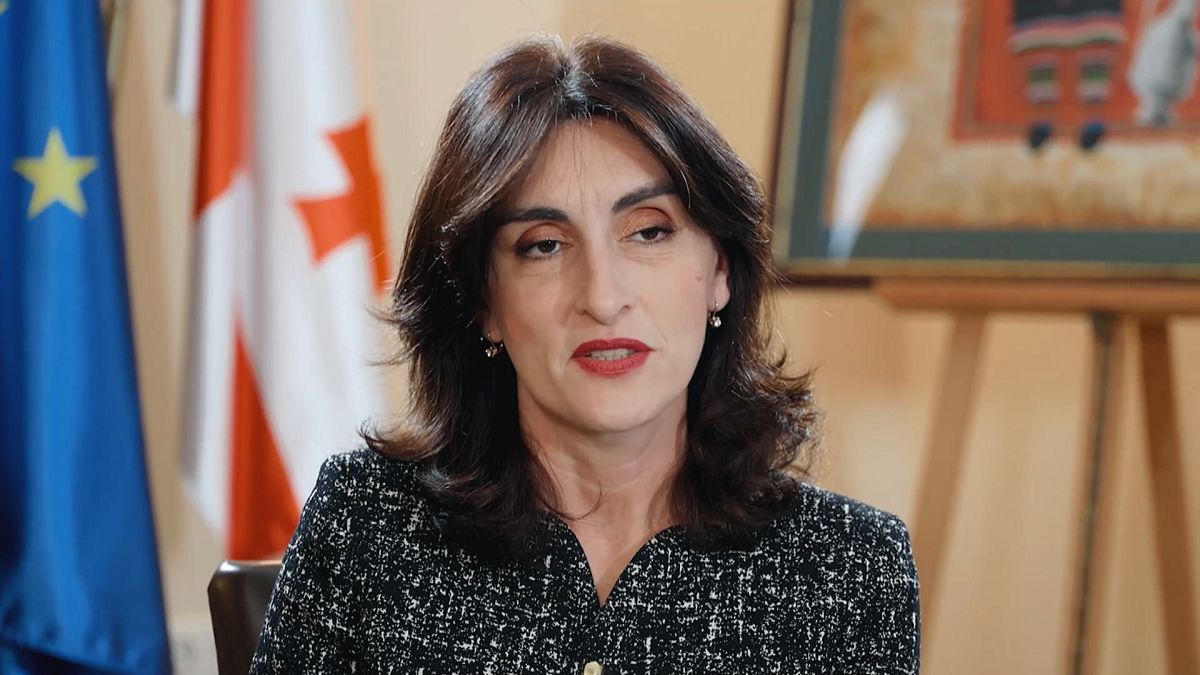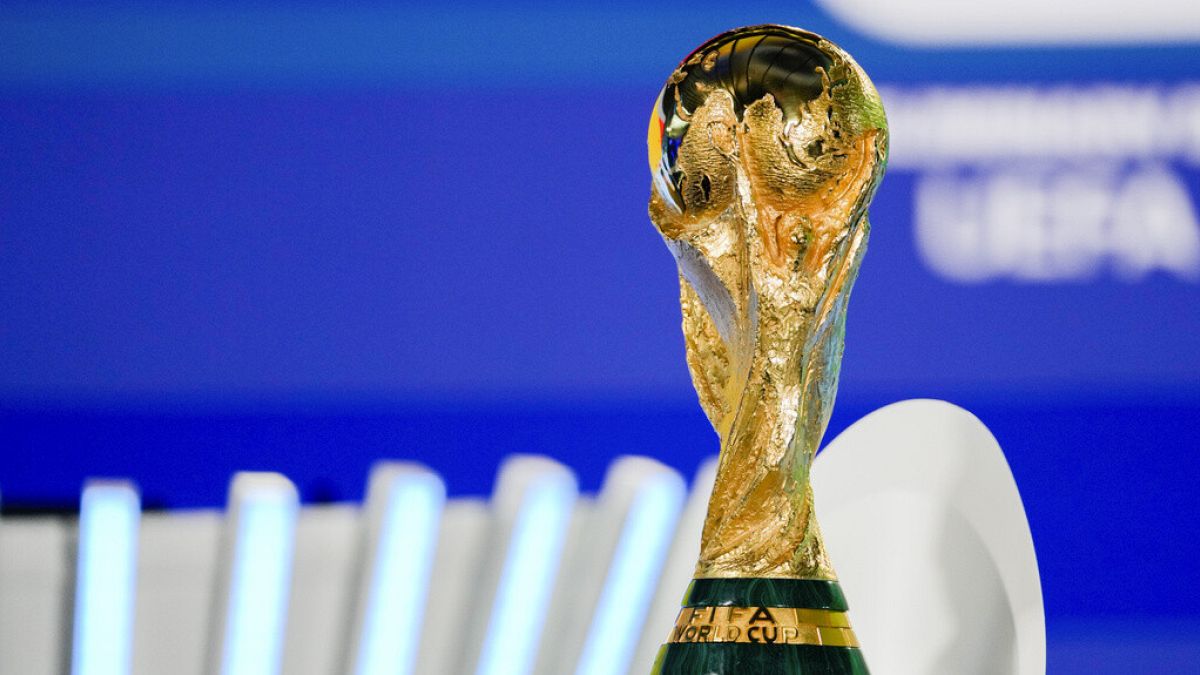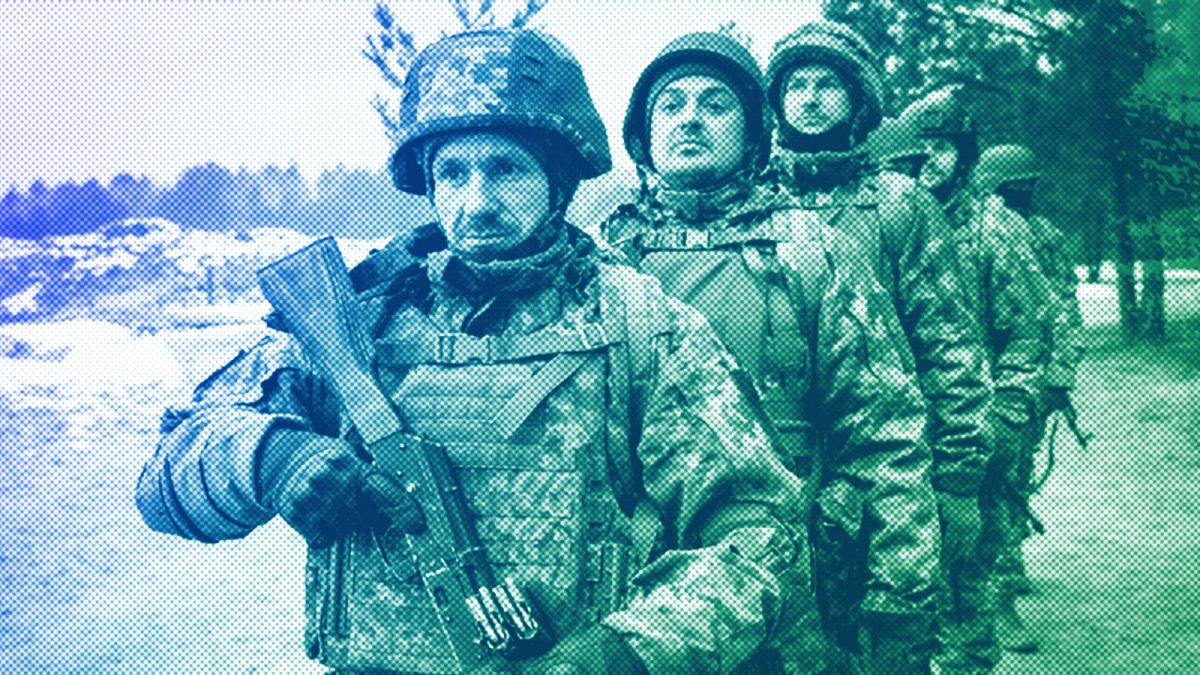Two years on: How is Ukraine adapting to a long-term war?
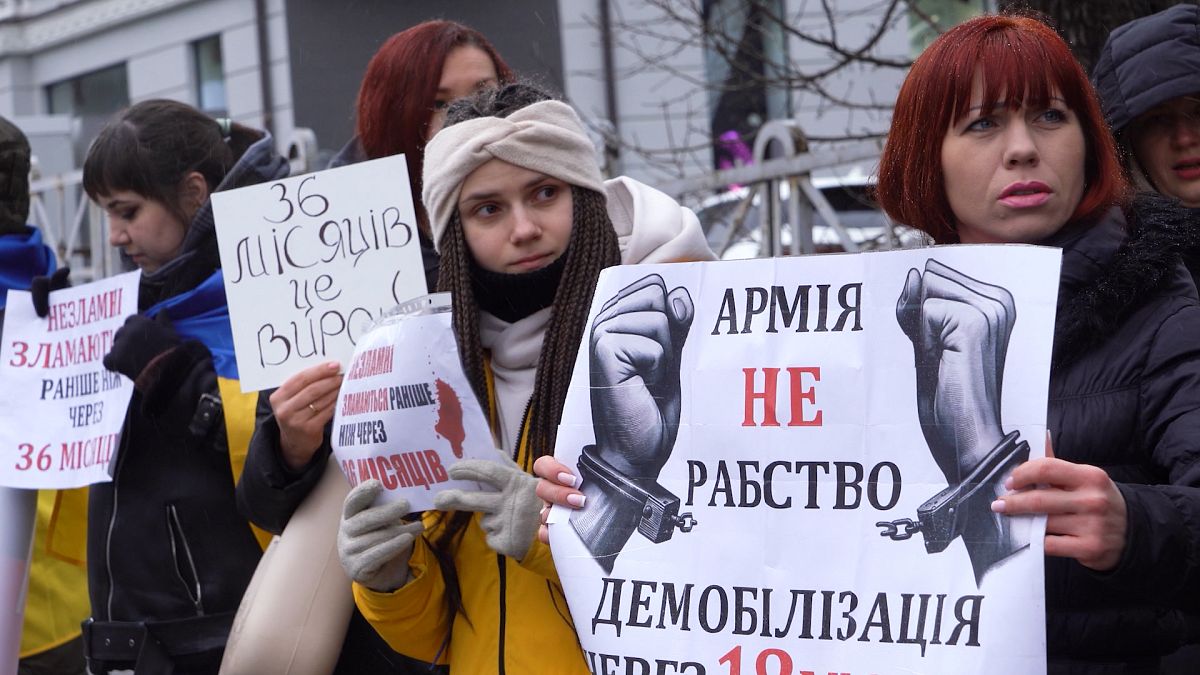
Euronews Reporter Valérie Gauriat travels to Kyiv and the Donbas to see how Ukraine’s population are coping with a conflict that has become part of their daily lives.
More than 10,000 civilians have died since Russia’s full-scale invasion of Ukraine began on 24 February 2022. Many hoped the fighting would be shortlived, however, the conflict, now in its third year, has evolved into a war of attrition.
On a rainy day in February, Antonina Danylevich, the wife of a Ukrainian soldier, and a few dozen women, had gathered in Kyiv to call for shorter terms of service for soldiers mobilised on the frontline since the first days of the war.
“My husband has been in the combat zone for two years. In all this time he only had 30 days off. Our men should be replaced, they should have time to rest. And after that, if they want to go back, then fine,” Antonina told Euronews.
An absence hard-felt
Every Saturday, in a secret location at the edge of the Ukrainian capital, groups of women partake in military training sessions, under the aegis of ‘Ukraine Walkyrie’.
Daryna Trebukh founded the course after Russian troops withdrew from the Kyiv region in March 2022. “After what happened in Bucha and Irpin, our women were defenceless, they were under occupation and they didn’t know how to protect themselves. So I decided to start this school of survival, to teach women how to defend themselves,” she explained.
Daryna and her trainees expect a long-lasting war. Kateryna, a doctor, stop to talk to us after finishing a shooting drill. Her husband has been on the frontline for two years: “My daughter is very interested in what I do here. She can’t wait to turn 14 in a few months, the age at which she’s allowed to start military training, not with real weapons, but with strikeballs for instance. I wish it wasn’t, but war could well be part of her future”, she sighs .
The war, an experimentation field
Ukrainian students are also learning to adapt to the war. We visit the prestigious Kyiv Polytechnic Institute. Many courses are now carried out remotely.
But a new ultra-secure space has been set up to allow students to work on site in times of war.
“In this modern shelter, students and teachers can work in a safe and comfortable way,when there are no alerts, and when the alert is on”, says vice-rector Vitali Pasichnyk.
Generators, ventilation systems, internet connection, rest areas, nothing has been left out. Funded by companies, the initiative must be replicated in other universities in the country.
“If you don’t support young students, they could leave Ukraine. You can create innovations here, build businesses. This is more than just a reaction to Russia’s aggression. It’s an investment in our future.”, smile Pasichnyk.
We follow 20 year old Ivan to one of the Institute’s research lab. He and a group of co-students are busy assembling an electronic stretcher that can be controlled remotely and used to transport wounded soldiers away from the frontline.
“It takes three or four people to carry a wounded soldier with equipment, but with this, you just place him on the stretcher and drive him away remotely,” explained Ivan.
Beyond participating in the war effort, the students have ambitions for the future. “We are gaining skills with this project. My dream is to help develop Ukraine and create modern enterprises, to produce new and competitive things. We have huge potential” he added.
One of the budding sectors of the future is drone manufacturing. Hundreds of drone factories have sprung up all over Ukraine in the past two years.
Airlogix gave Euronews a tour; approximately thirty surveillance and reconnaissance drones are dispatched from its factory every month.
“They allow our armed forces to fly deep into enemy lines and identify enemy equipment, such as air defence systems, electronic warfare, armoury, warehouses, and so on,” said CEO Vitalii Kolisnichenko.
“You need to be technologically advanced in this war. We consider drones to be key to our victory.”
Starting from a small cargo drones manufacture, with around ten employees two years ago, Vitalii now employs a hundred people. He plans to double production soon and extend it to kamikaze and bomber drones.
An expansion supported by the Ukrainian state. Tax cuts, or the increase in the profit thresholds authorized for military contracts, have favored the birth of hundreds of factories like this one.
“That’s quite a boost for companies like ours, because we reinvest. We continuously try to invent technologies that will help us gain our victory.”
In the long run, Kolisnichenko believes drones could become a top Ukrainian export and help drive the country’s economy: “I think eventually, Ukraine will become the centre of unmanned technologies, for the whole world.”
We leave Kyiv, to head for the regions close to the front line, which extends over a thousand kilometers in the south and east of Ukraine.
Areas which concentrate a large part of the country’s industrial infrastructure, much exposed to Russian bombings.
Set at the edge of the city of Zaporizhzhia, stands one of the largest steel factories in Ukraine.
Iron will
Zaporizhstal became the country’s leading producer of steel and cast iron, after the destruction of the sadly famous Azovstal site during the Battle of Mariupol, in the first months of the full-scale invasion.
In two years, the factory lost a quarter of its 10,000 employees, mobilized or gone to safer areas in the country or abroad.
The site now operates at 70 percent of its capacity. Not without obstacles.
«The main type of logistics for metallurgy industries was sea logistics. We were forced to move to railway transport, which is four times more expensive. And also we can’t import all the raw material we need, nor can we reach the volumes at which we need to sell our products.” says CEO Roman Slobodianuk.
Set some 40 kilometers away from the frontline, the factory is under constant threat. But the workers are holding on.
Maksym used to work at the Azovstal factory, and was able to find a job here. “I can’t avoid thinking about the dangers about the war. But we are human beings, we have to live, to distract ourselves, and we don’t lose hope. We work for our victory. »
Distracting from the war is a challenge, for adults and children alike.
We end our visit to Zaporizhzhia in an extra-curricular activity center that we cannot identify for security reasons. The climbing session we were due to film was interrupted just before our arrival.
«There was an alert, we sent our children to the bomb shelter.”, aplologises Galyna, the centre’s director. We join the children in the shelter. “We are used to the alerts, there are 9 or 10 of them a day, smiles 13 year old Veronika. “At the beginning of the war I was afraid of alarms. Now I am used to them, and to shellings, to drones flying, all those things…”
The alert is over. The children hurry back to their climbing session. With the war, activities organized for children have been adapted to the war context.
Living from one alert to another
“We are teaching children not only how to travel in the mountains, how to orient themselves on the terrain, but also how to provide first aid, and how to transport victims, to different areas and in different conditions.”, explains Svitlana Bebeshko, head trainer at the centre.
The children’s moment of respite is short-lived, as another siren shrieks out. “That’s how we work, from one alert to the next alert. But we’re not afraid of them!” says Galyna, shrugging.
We hit the road again towards the East, and the Donetsk region, in the Donbass, where the war of attrition continues its ravages.
A veterinarian during the weekend, Evgeniy Tkachov spends the rest of his time helping people in towns and villages close to the front line.
He takes us to the town of Selydove, set some 20 kilometers away from the frontline. Evgeniy and his team from the Proliska ngo had organized distribution of basic goods and wooden panels for residents whose homes were shattered by overnight Russian shellings.
“Every day there are more and more people in need. Apart from the fact that we give humanitarian aid, we call people to evacuate and leave. People have spent their whole lives in these small mining towns. So, it’s very hard for them to go elsewhere.”, explains Tkachov.
« We have nowhere to go”, sighs Inna, one of the residents. “We’ll rent an apartment. We hope that at least it will be quiet. And we will be able to come back here. We hope each day that it will end soon. Or everything will be destroyed.”
We end our journey in the village of Selydove, set a dozen kilometers away from point zero. Rows of torn out houses offer a desolate sight.
Most residents have left to safer areas. Oleksandr is one of around twenty villagers, out of some 150, who decided to stay, despite the proximity of the fighting and harsh living conditions. His wife left for safety in a neighboring town after their home was bombed.
But he stayed on. He shows us the two small rooms he now lives in, after rebuilding the roof and walls. Oleksandr lives on food and basic necessities delivered each week by volunteers. But leaving is not an option.
“This is my land. It’ s my father’s land, the land of my grandfather and my great-grandfather. Why should I go anywhere?” he exclaims, as explosions tear the air. “No one would have stayed here if they didn’t believe that we were going to win, that the war would end with our victory.”
One of the soldiers operating in the area pays us an unexpected visit.
« I’m coming from the frontline. It’s hard. The fighting is ongoing. They’re trying to capture Avdiivka. They’re coming, they’re coming !”, says the soldier, sternly. “War is the hardest job that ever could be in this life” he sighs, before heading off. “I’m on my way, to serve the Motherland”.
A few days later, the town of Avdiivka fell into the hands of the Russian army.
Source: Euro News




